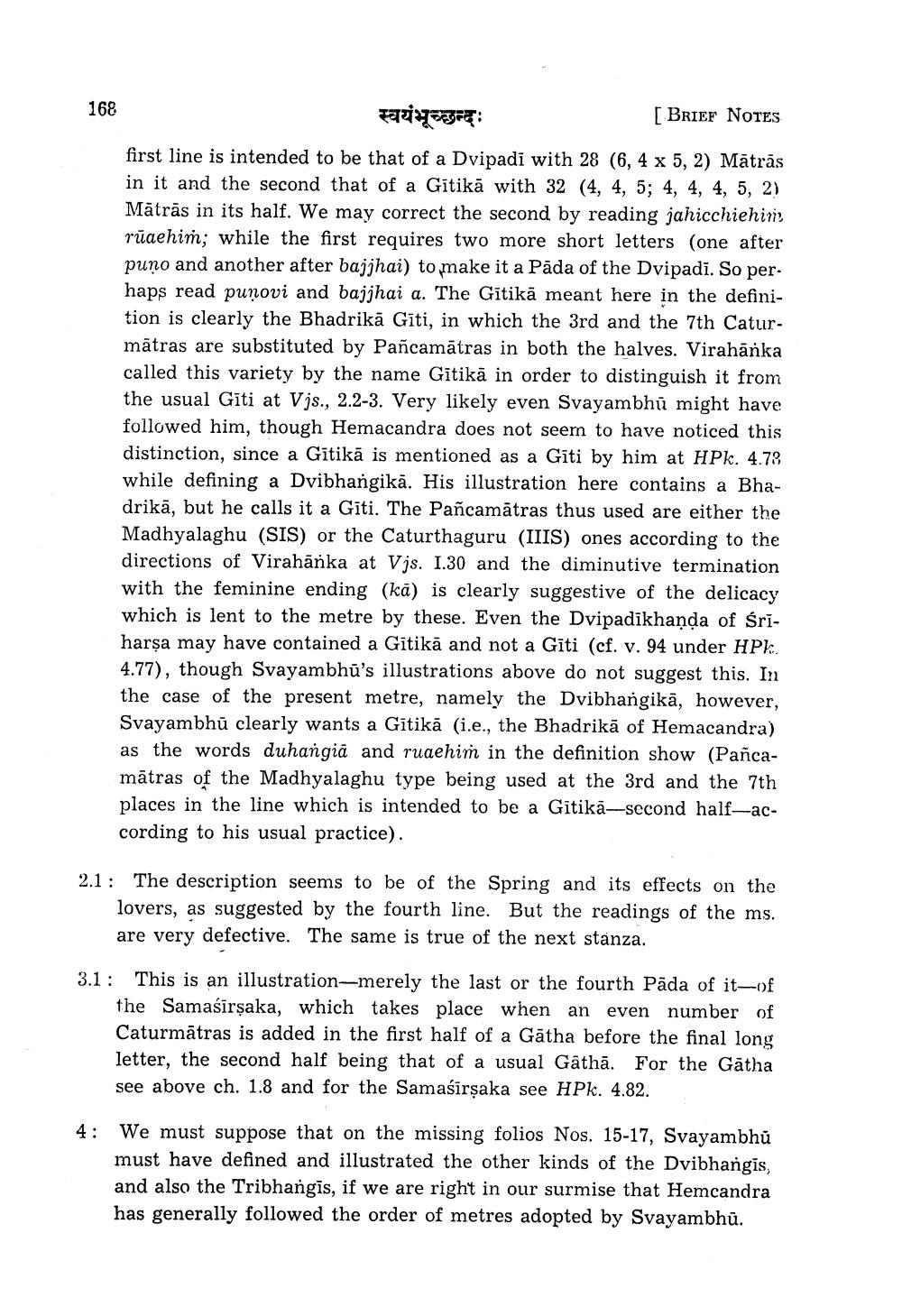________________
168
स्वयंभूच्छन्दः
[BRIEF NOTES
first line is intended to be that of a Dvipadi with 28 (6, 4 x 5, 2) Mātrās in it and the second that of a Gītikā with 32 (4, 4, 5; 4, 4, 4, 5, 2) Mātrās in its half. We may correct the second by reading jahicchiehim rūaehim; while the first requires two more short letters (one after puno and another after bajjhai) to make it a Pāda of the Dvipadi. So per. haps read punovi and bajjhai a. The Gītikā meant here in the definition is clearly the Bhadrikā Gīti, in which the 3rd and the 7th Caturmātras are substituted by Pañcamātras in both the halves. Virahānka called this variety by the name Gītikā in order to distinguish it from the usual Gīti at Vjs., 2.2-3. Very likely even Svayambhū might have followed him, though Hemacandra does not seem to have noticed this distinction, since a Gītikā is mentioned as a Gīti by him at HPk. 4.78 while defining a Dvibhangikā. His illustration here contains a Bhadrikā, but he calls it a Giti. The Pañcamātras thus used are either the Madhyalaghu (SIS) or the Caturthaguru (IIIS) ones according to the directions of Virahānka at Vjs. 1.30 and the diminutive termination with the feminine ending (kā) is clearly suggestive of the delicacy which is lent to the metre by these. Even the Dvipadikhanda of śriharsa may have contained a Gitikā and not a Gīti (cf. v. 94 under HPL. 4.77), though Svayambhu's illustrations above do not suggest this. In the case of the present metre, namely the Dvibhangikā, however, Svayambhū clearly wants a Gētikā (i.e., the Bhadrikā of Hemacandra) as the words duhangia and ruaehim in the definition show (Pañcamātras of the Madhyalaghu type being used at the 3rd and the 7th places in the line which is intended to be a Gītikā-second half-according to his usual practice).
2.1: The description seems to be of the Spring and its effects on the
lovers, as suggested by the fourth line. But the readings of the ms. are very defective. The same is true of the next stanza.
3.1: This is an illustration, merely the last or the fourth Päda of it-of
the Samaśīrṣaka, which takes place when an even number of Caturmātras is added in the first half of a Gātha before the final long letter, the second half being that of a usual Gathā. For the Gatha see above ch. 1.8 and for the Samasirşaka see HPk. 4.82.
4: We must suppose that on the missing folios Nos. 15-17, Svayambhū
must have defined and illustrated the other kinds of the Dvibhangis, and also the Tribhangis, if we are right in our surmise that Hemcandra has generally followed the order of metres adopted by Svayambhū.




